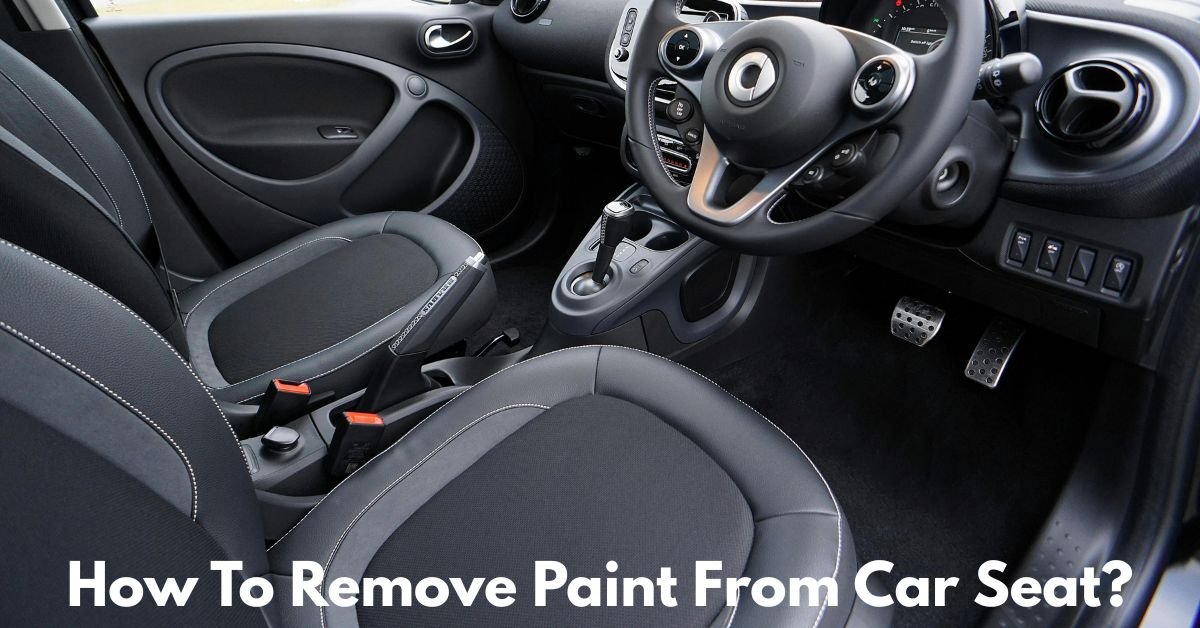Finding paint on your car seat can be frustrating — especially if you don’t know how it got there. Whether it’s a small splash from a painting project or a surprise your child left behind, you’ll want to get it cleaned up as quickly and safely as possible. The good news is, removing paint from a car seat is doable. But before you rush in with a scrub brush, take a breath. The right approach will protect your seat’s material and restore your car’s interior to its former glory.
Here’s a detailed guide on how to remove paint from your car seat without causing more damage.
How to Remove Paint from a Car Seat: A Step-by-Step Guide
Step 1: Identify the Type of Paint
First things first: you need to know what kind of paint you’re dealing with. In general, there are two primary categories of paint:
- Water-based paint (latex or acrylic) – Common for home improvement projects. Easier to remove.
- Oil-based paint – Used for heavy-duty applications. Tougher to clean, especially when dried.
The type of paint will determine the best cleaning method and products to use.
Step 2: Check the Car Seat Material
Next, identify your car seat’s material. Most car interiors are made of:
- Leather or faux leather
- Cloth or fabric upholstery
- Vinyl
Different materials require different handling, especially when using cleaning solutions or scraping tools. Always check your car’s owner’s manual or consult the manufacturer if you’re unsure.
Step 3: Act Quickly (If the Paint Is Still Wet)
If the paint is fresh, you’re in luck. Use a clean paper towel or cloth to gently blot (not rub) the paint. The objective is to absorb as much paint as you can without letting it spread. Water should not be used at this point since it could spread the stain.
Once the excess is removed, you can proceed based on the paint type:
- Water-based paint: Mix a small amount of mild dish soap with warm water. Dip a clean cloth into the mixture and blot the paint stain. Rinse the cloth frequently and continue blotting until the paint is gone.
- Oil-based paint: Use a small amount of rubbing alcohol or acetone on a cotton ball or cloth. Gently dab the spot. Be cautious — these solvents can damage leather or vinyl, so test a hidden area first.
Must Read: 4 Best Guides Can You Put Seat Covers On Heated Car Seats?

Step 4: If the Paint Is Dry
Dried paint is harder to remove, but not impossible.
For Cloth Seats:
- Gently scrape: Use a plastic scraper or dull knife to loosen as much paint as possible.
- Apply a cleaner: Use a solution of soap and warm water for water-based paint. For oil-based paint, try rubbing alcohol or a fabric-safe solvent.
- Blot and scrub: Scrub the area gently with a clean cloth and a soft-bristled brush.
- Rinse and dry: Once the paint lifts, blot with a damp cloth to remove any residue, then let it air dry.
For Leather or Vinyl Seats:
- Scrape with care: Use a plastic card or your fingernail to gently lift dried paint.
- Apply solvent sparingly: Using a cotton swab, apply isopropyl alcohol. Gently rub the area.
- Clean with leather cleaner: Follow up with a leather conditioner to keep the seat soft and protected.
Step 5: Use Commercial Products (Optional)
There are specialty automotive upholstery cleaners designed to remove stains, including paint. Products like Goo Gone Automotive, Meguiar’s Carpet & Upholstery Cleaner, or Leather Honey (for leather) can help when household items don’t work. Always read product labels and test in a hidden area first.
Step 6: Prevent Future Stains
Once your car seat is clean again, consider taking some preventative measures:
- Use seat covers during painting or DIY projects.
- Keep children’s art supplies in sealed containers.
- Have cleaning supplies in your car for quick action if spills happen again.
Final Thoughts
Removing paint from a car seat takes patience and care. Whether it’s a small drip or a large smear, acting quickly and using the right tools can make all the difference. Always be gentle, test products before full use, and tailor your approach based on the seat material and type of paint.
If the stain is large or your seat is expensive (such as luxury leather), consider calling a professional detailer. Sometimes, a pro’s touch is the safest route.
With the right steps, you can get your car interior looking clean and fresh again — like the accident never happened.